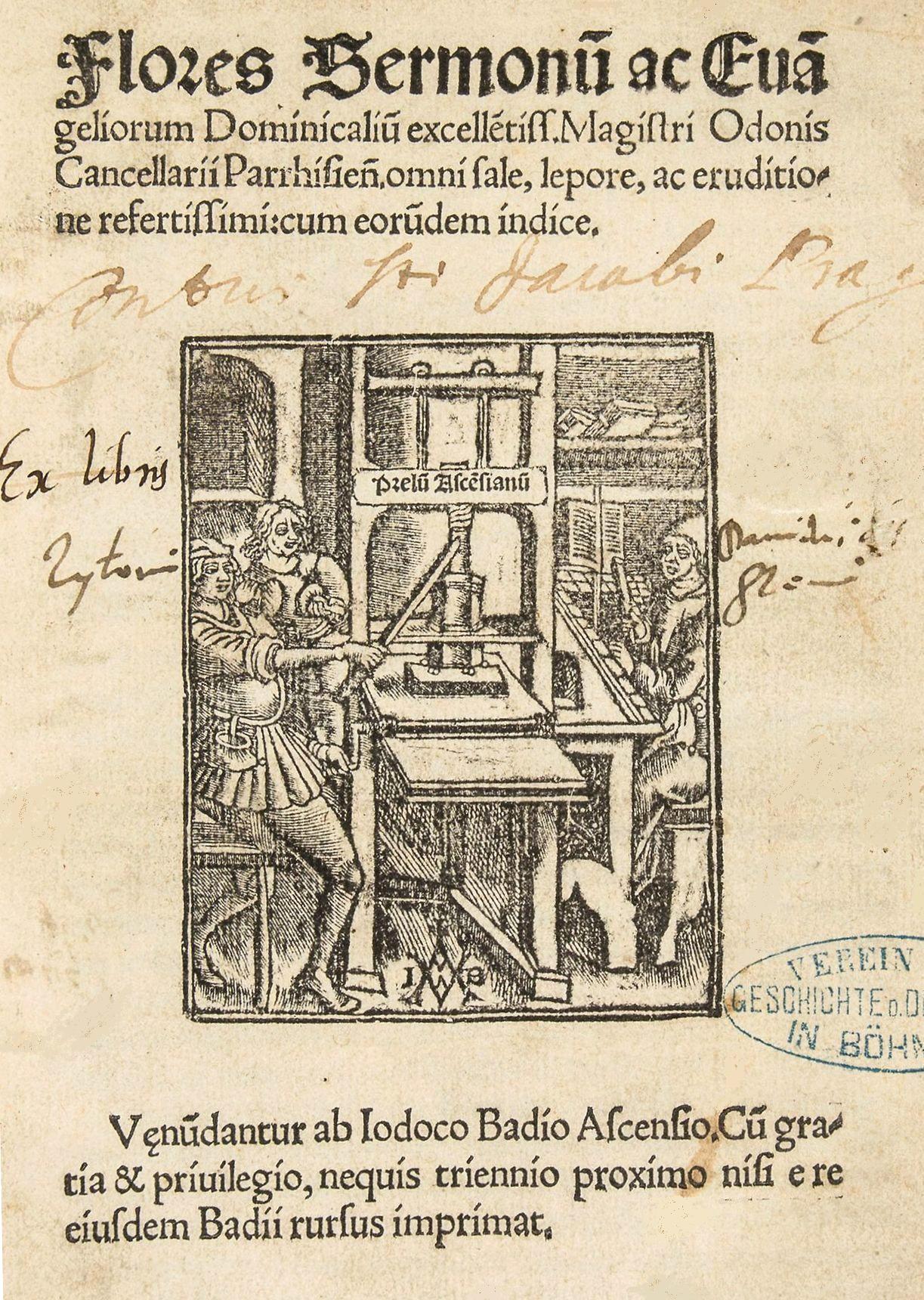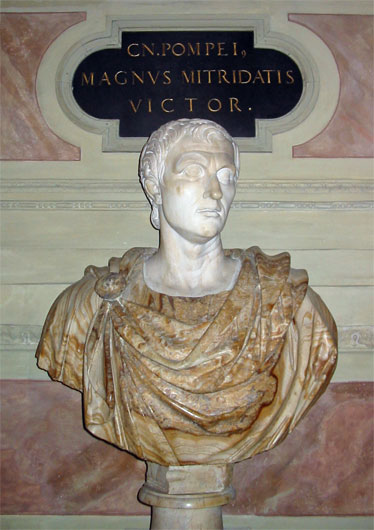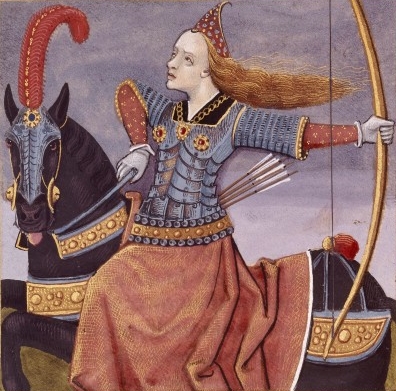|
Exemplum
An exemplum (Latin for "example", pl. exempla, ''exempli gratia'' = "for example", abbr.: ''e.g.'') is a moral anecdote, brief or extended, real or fictitious, used to illustrate a point. The word is also used to express an action performed by another and used as an example or model. Exemplary literature This genre sprang from the above, in classical, medieval and Renaissance literature, consisting of lives of famous figures, and using these (by emphasizing good or bad character traits) to make a moral point. Collections of Exempla helped medieval preachers to adorn their sermons, to emphasize moral conclusions or illustrate a point of doctrine. The subject matter could be taken from fables, folktales, legends, real history, or natural history. Jacques de Vitry's book of exempla, c. 1200, Nicholas Bozon's ''Les contes moralisés'' (after 1320), and Odo of Cheriton's ''Parabolae'' (after 1225) were famous medieval collections aimed particularly at preachers. Geoffrey Chauce ... [...More Info...] [...Related Items...] OR: [Wikipedia] [Google] [Baidu] |
Der Stricker
Der Stricker is the pseudonym of a 13th-century Middle High German itinerant poet whose real name has been lost to history. His name, which means "The Knitter," may indicate he was a commoner; he was likely from Franconia but later worked in Austria. His works evince a knowledge of German literature and practical theology, and include both adaptations and works with no known sources.Gürttler, Karin R. (1991). "Der Stricker". In Lacy, Norris J., ''The New Arthurian Encyclopedia'', p. 434. New York: Garland. . Der Stricker's oeuvre includes the Arthurian romance '' Daniel von dem blühenden Tal'' and the epic ''Karl'', a German adaptation of the ''Song of Roland'', based directly on Konrad der Pfaffe's earlier German version but updated for his time. However, he was chiefly a writer of didactic poetry and exempla or bispel, and was one of the early pioneers of the genre. These poems dealt not only with the religious and moral matters typical of the form, but also with the praise ... [...More Info...] [...Related Items...] OR: [Wikipedia] [Google] [Baidu] |
Odo Of Cheriton
Odo of Cheriton (1180/1190 – 1246/47) was an English preacher and fabulist who spent a considerable time studying in Paris and then lecturing in the south of France and in northern Spain. Life and background Odo belonged to a Norman family which had settled in Kent and were named from their manor at Cheriton. He, however, was brought up at the family’s new manor on the other side of the county in Farningham. His father William had been a crusader with Richard Coeur de Lion and then added to the family’s fortunes as a supporter of King John. His son Odo studied at the University of Paris, where he had gained the degree of Master (''Magister'') by 1211, after which he was granted custody of the church at Cheriton. There is uncertainty whether his degree was in theology, but by the end of the decade he was describing himself as ''Doctor Ecclesiae'' (doctor of the church) when his popular sermons on the Sunday Gospels were completed in 1219. There is evidence that many of these ... [...More Info...] [...Related Items...] OR: [Wikipedia] [Google] [Baidu] |
Page From 'Libro De Los Exemplos Por A
Page most commonly refers to: * Page (paper), one side of a leaf of paper, as in a book Page, PAGE, pages, or paging may also refer to: Roles * Page (assistance occupation), a professional occupation * Page (servant), traditionally a young male servant * Page (wedding attendant) People with the name * Page (given name) * Page (surname) Places Australia * Page, Australian Capital Territory, a suburb of Canberra * Division of Page, New South Wales * Pages River, a tributary of the Hunter River catchment in New South Wales, Australia * The Pages, South Australia, two islands and a reef **The Pages Conservation Park, a protected area in South Australia United States * Page, Arizona, a city * Page, Indiana * Page, Minneapolis, Minnesota, a neighborhood * Page, Nebraska, a village * Page, North Dakota, a city * Page, Oklahoma, an unincorporated community * Page, Virginia * Page, Washington, a ghost town * Page, West Virginia, a census-designated place * Page Airport (disambigua ... [...More Info...] [...Related Items...] OR: [Wikipedia] [Google] [Baidu] |
Lives Of The Twelve Caesars
''De vita Caesarum'' (Latin; "About the Life of the Caesars"), commonly known as ''The Twelve Caesars'', is a set of twelve biographies of Julius Caesar and the first 11 emperors of the Roman Empire written by Gaius Suetonius Tranquillus. The group are: Julius Caesar (d. 44 BC), Augustus, Tiberius, Caligula, Claudius, Nero, Galba, Otho, Vitellius, Vespasian, Titus, Domitian (d. 96 AD). The work, written in AD 121 during the reign of the emperor Hadrian, was the most popular work of Suetonius, at that time Hadrian's personal secretary, and is the largest among his surviving writings. It was dedicated to a friend, the Praetorian prefect Gaius Septicius Clarus. ''The Twelve Caesars'' was considered very significant in antiquity and remains a primary source on Roman history. The book discusses the significant and critical period of the Principate from the end of the Republic to the reign of Domitian; comparisons are often made with Tacitus, whose surviving works document a s ... [...More Info...] [...Related Items...] OR: [Wikipedia] [Google] [Baidu] |
Christine De Pizan
Christine de Pizan or Pisan (), born Cristina da Pizzano (September 1364 – c. 1430), was an Italian poet and court writer for King Charles VI of France and several French dukes. Christine de Pizan served as a court writer in medieval France after the death of her husband. Christine's patrons included dukes Louis I of Orleans, Philip the Bold of Burgundy, and his son John the Fearless. Considered to be some of the earliest feminist writings, her work includes novels, poetry, and biography, and she also penned literary, historical, philosophical, political, and religious reviews and analyses. Her best known works are '' The Book of the City of Ladies'' and '' The Treasure of the City of Ladies'', both written when she worked for John the Fearless of Burgundy. Her books of advice to princesses, princes, and knights remained in print until the 16th century. In recent decades, Christine's work has been returned to prominence by the efforts of scholars Charity Cannon Willard, E ... [...More Info...] [...Related Items...] OR: [Wikipedia] [Google] [Baidu] |
On Famous Women
''De Mulieribus Claris'' or ''De Claris Mulieribus'' (Latin for "Concerning Famous Women") is a collection of biographies of historical and mythological women by the Florentine author Giovanni Boccaccio, composed in Latin prose in 1361–1362. It is notable as the first collection devoted exclusively to biographies of women in post-ancient Western literature. At the same time as he was writing ''On Famous Women'', Boccaccio also compiled a collection of biographies of famous men,'' De Casibus Virorum Illustrium'' (''On the Fates of Famous Men''). Purpose Boccaccio claimed to have written the 106 biographies for the posterity of the women who were considered renowned, whether good or bad. He believed that recounting the deeds of certain women who may have been wicked would be offset by the exhortations to virtue by the deeds of good women. He writes in his presentation of this combination of all types of women that he hoped it would encourage virtue and curb vice. Overview The ... [...More Info...] [...Related Items...] OR: [Wikipedia] [Google] [Baidu] |
Boccaccio
Giovanni Boccaccio (, , ; 16 June 1313 – 21 December 1375) was an Italian writer, poet, correspondent of Petrarch, and an important Renaissance humanist. Born in the town of Certaldo, he became so well known as a writer that he was sometimes simply known as "the Certaldese" and one of the most important figures in the European literary panorama of the fourteenth century. Some scholars (including Vittore Branca) define him as the greatest European prose writer of his time, a versatile writer who amalgamated different literary trends and genres, making them converge in original works, thanks to a creative activity exercised under the banner of experimentalism. His most notable works are '' The Decameron'', a collection of short stories which in the following centuries was a determining element for the Italian literary tradition, especially after Pietro Bembo elevated the Boccaccian style to a model of Italian prose in the sixteenth century, and '' On Famous Women''. He w ... [...More Info...] [...Related Items...] OR: [Wikipedia] [Google] [Baidu] |
The Legend Of Good Women
''The Legend of Good Women'' is a poem in the form of a dream vision by Geoffrey Chaucer during the fourteenth century. The poem is the third longest of Chaucer's works, after '' The Canterbury Tales'' and ''Troilus and Criseyde'', and is possibly the first significant work in English to use the iambic pentameter or decasyllabic couplets which he later used throughout ''The Canterbury Tales''. This form of the heroic couplet would become a significant part of English literature possibly inspired by Chaucer. Summary Prologue The prologue describes how Chaucer is reprimanded by the god of love and his queen, Alceste, for his works—such as ''Troilus and Criseyde''—depicting women in a poor light. Criseyde is made to seem inconstant in love in that earlier work, and Alceste demands a poem of Chaucer extolling the virtues of women and their good deeds. The incomplete nature of the poem is suggested by Chaucer's Retraction from ''The Canterbury Tales'' which calls ... [...More Info...] [...Related Items...] OR: [Wikipedia] [Google] [Baidu] |
Chaucer
Geoffrey Chaucer (; – 25 October 1400) was an English poet, author, and civil servant best known for '' The Canterbury Tales''. He has been called the "father of English literature", or, alternatively, the "father of English poetry". He was the first writer to be buried in what has since come to be called Poets' Corner, in Westminster Abbey. Chaucer also gained fame as a philosopher and astronomer, composing the scientific '' A Treatise on the Astrolabe'' for his 10-year-old son Lewis. He maintained a career in the civil service as a bureaucrat, courtier, diplomat, and member of parliament. Among Chaucer's many other works are ''The Book of the Duchess'', '' The House of Fame'', '' The Legend of Good Women'', and ''Troilus and Criseyde''. He is seen as crucial in legitimising the literary use of Middle English when the dominant literary languages in England were still Anglo-Norman French and Latin. Chaucer's contemporary Thomas Hoccleve hailed him as "the firste fynder ... [...More Info...] [...Related Items...] OR: [Wikipedia] [Google] [Baidu] |
Petrarch
Francesco Petrarca (; 20 July 1304 – 18/19 July 1374), commonly anglicized as Petrarch (), was a scholar and poet of early Renaissance Italy, and one of the earliest humanists. Petrarch's rediscovery of Cicero's letters is often credited with initiating the 14th-century Italian Renaissance and the founding of Renaissance humanism. In the 16th century, Pietro Bembo created the model for the modern Italian language based on Petrarch's works, as well as those of Giovanni Boccaccio, and, to a lesser extent, Dante Alighieri. Petrarch was later endorsed as a model for Italian style by the Accademia della Crusca. Petrarch's sonnets were admired and imitated throughout Europe during the Renaissance and became a model for lyrical poetry. He is also known for being the first to develop the concept of the " Dark Ages".Renaissance or Prenai ... [...More Info...] [...Related Items...] OR: [Wikipedia] [Google] [Baidu] |





_School_-_Boccaccio_(1313–1375)_(Giovanni_Boccaccio)_-_355512_-_National_Trust.jpg)
